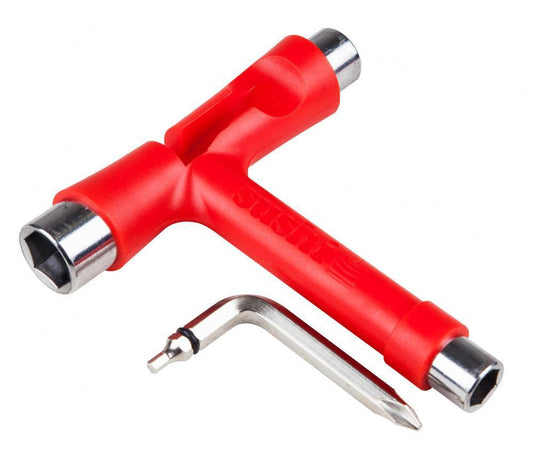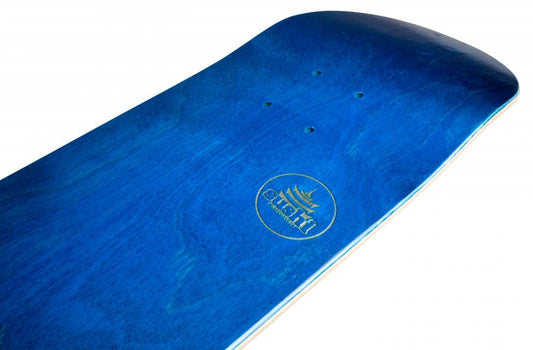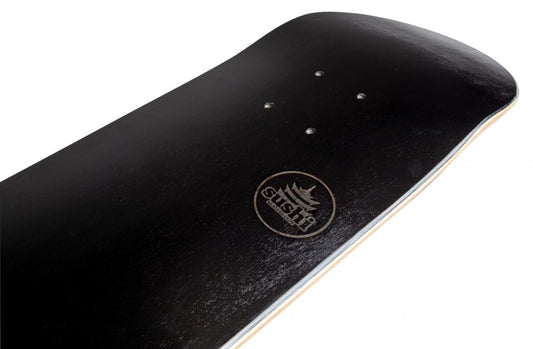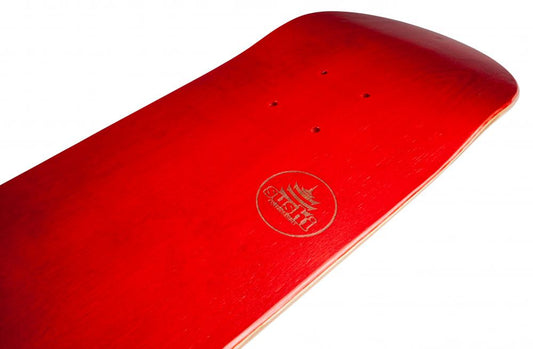Collection: Street Decks
Street Skateboard Decks
Step up your street skating game with our premium street skateboard decks. Designed for tricks, flips, and grinds, these decks are built to last. Each skateboard deck is crafted from high-quality maple wood, giving you the perfect balance of strength and... Read More
Street Skateboard Decks
Step up your street skating game with our premium street skateboard decks. Designed for tricks, flips, and grinds, these decks are built to last. Each skateboard deck is crafted from high-quality maple wood, giving you the perfect balance of strength and flexibility. Whether you’re a beginner or a pro, our street skateboard decks are made to enhance your performance.
Need a complete? Check out our range here
We offer a wide variety of pro skateboard decks to suit every skater’s style. From classic designs to bold, eye-catching graphics, there’s a deck for everyone. Our durable street decks handle the stress of street skating, jumps, and rails without cracking or splintering. Light yet strong, they provide superior control for executing precise tricks.
Looking for custom skateboard decks? Our collection includes options that allow you to stand out on the streets. Personalize your skateboard deck with your favorite colors and designs. High-quality skate decks aren’t just about looks—they are engineered for maximum pop and smooth landings. Every deck is tested to ensure it meets professional standards for street skating.
At our shop, we make it easy to find the right skateboard deck. Browse by size, shape, or brand to discover your perfect fit. Many skaters prefer 8-inch skateboard decks for balance and versatility, ideal for both technical tricks and cruising the streets. Check out our lightweight skateboard decks if you want a nimble feel and fast response during tricks.
Our street skating boards feature top-tier skateboard deck graphics that turn heads while performing. You can find skate deck brands that are trusted by professional skaters worldwide. Durable street decks ensure you can practice tricks like ollies, kickflips, and grinds without worrying about damage. Performance skateboard decks like these are an essential addition to any street skater’s gear.
Whether shopping for your first deck or upgrading your current setup, our high-quality skate decks are a reliable choice. Our shop provides detailed descriptions, sizes, and graphics to help you make an informed decision. Choose from the best skateboard decks, crafted for style, durability, and street skating performance.
Street decks aren’t just functional—they’re a statement. Bold graphics and vibrant colors reflect your personality while skating. Custom skateboard decks let you create a unique look that matches your style. Lightweight skateboard decks make it easier to perform advanced tricks without sacrificing strength. Pro skateboard decks are perfect for street skating enthusiasts of all levels.
Every skater deserves a deck that delivers consistent performance. Our collection of durable street decks ensures long-lasting use. High-quality skate decks offer the right flex, pop, and control for executing technical tricks. Browse our online skate deck shop to find the perfect size and design. Street skating boards from top brands provide confidence whether practicing in the park or on urban streets.
Finding the right skateboard deck is crucial for progression. Performance skateboard decks offer the pop, stability, and durability needed for advanced tricks. Custom skateboard decks give you the freedom to showcase your personal style. Lightweight skateboard decks provide excellent maneuverability, making technical tricks easier to master. Pro skateboard decks are engineered for skaters who demand the best.
Our street decks collection is designed with skaters in mind. Whether you are hitting rails, ledges, or performing street tricks, these decks perform exceptionally. Durable street decks withstand repeated impact and grinding. Skateboard deck graphics range from subtle designs to bold visuals, letting you express yourself. High-quality skate decks ensure reliable performance for beginners and pros alike.
At Bob Gnarly Surf, we understand that street skating is more than a hobby—it’s a lifestyle. That’s why our decks are carefully selected to meet professional standards. Our online skate deck shop offers options for every skater, from custom skateboard decks to lightweight street skating boards. Pro skateboard decks ensure a smooth ride, maximum control, and lasting durability.
Investing in the best skateboard decks pays off in performance and enjoyment. Our durable street decks allow skaters to focus on tricks, style, and progression. Street skating boards with the right flex and pop help improve technique and confidence. Browse our high-quality skate decks to find your ideal fit today. Custom skateboard decks are perfect for those who want a personal touch.
Need More Help Or Advice?
If you’re looking for expert advice, tips, or guidance on anything surf or skate related, we’re here to help! At Bob Gnarly Surf, we love sharing our passion and knowledge to make sure you get the most out of your time on the waves or the board. Whether it’s choosing the right gear, learning new techniques, or simply getting some pro recommendations, don’t hesitate to reach out. The easiest way to get in touch is through our live chat—just click the blue button at the bottom of your screen. Our team is ready to answer your questions.
Read Less-
Sushi Ultimate Ninja T Skate Tool Green
Vendor:SushiRegular price £5.99 GBPRegular price -
Sushi Ultimate Ninja T Skate Tool Black
Vendor:SushiRegular price £5.99 GBPRegular price -
Sushi Ultimate Ninja Skate T Tool Blue
Vendor:SushiRegular price £5.99 GBPRegular price -
Sushi Ultimate Ninja Skate T Tool Red
Vendor:SushiRegular price £5.99 GBPRegular price -
Jessup 33" x 9" Ultragrip Griptape 1 Sheet
Vendor:JessupRegular price £6.99 GBPRegular price -
Sushi Deck Spectrum Logo Yellow/Teal 32" x 8"
Vendor:SushiRegular price £14.99 GBPRegular price£29.99 GBPSale price £14.99 GBPSale -
Sushi Pagoda Stamp Blue Deck 31.25" x 8.125"
Vendor:SushiRegular price £15.99 GBPRegular price£29.99 GBPSale price £15.99 GBPSale -
Sushi Pagoda Stamp Black Deck 31.25" x 8"
Vendor:SushiRegular price £15.99 GBPRegular price£29.99 GBPSale price £15.99 GBPSold out -
Sushi Pagoda Stamp Red Deck 31.25" x 7.875"
Vendor:SushiRegular price £15.99 GBPRegular price£24.99 GBPSale price £15.99 GBPSale -
Sushi Pagoda Logo Black Deck 32" x 8.125"
Vendor:SushiRegular price £15.99 GBPRegular price£24.99 GBPSale price £15.99 GBPSale -
Sushi Pagoda Logo Blue Deck 32" x 8"
Vendor:SushiRegular price £15.99 GBPRegular price£24.99 GBPSale price £15.99 GBPSale

WIN SURF GEAR
Enter our epic prize draw competitions for as little as 99p a ticket



















